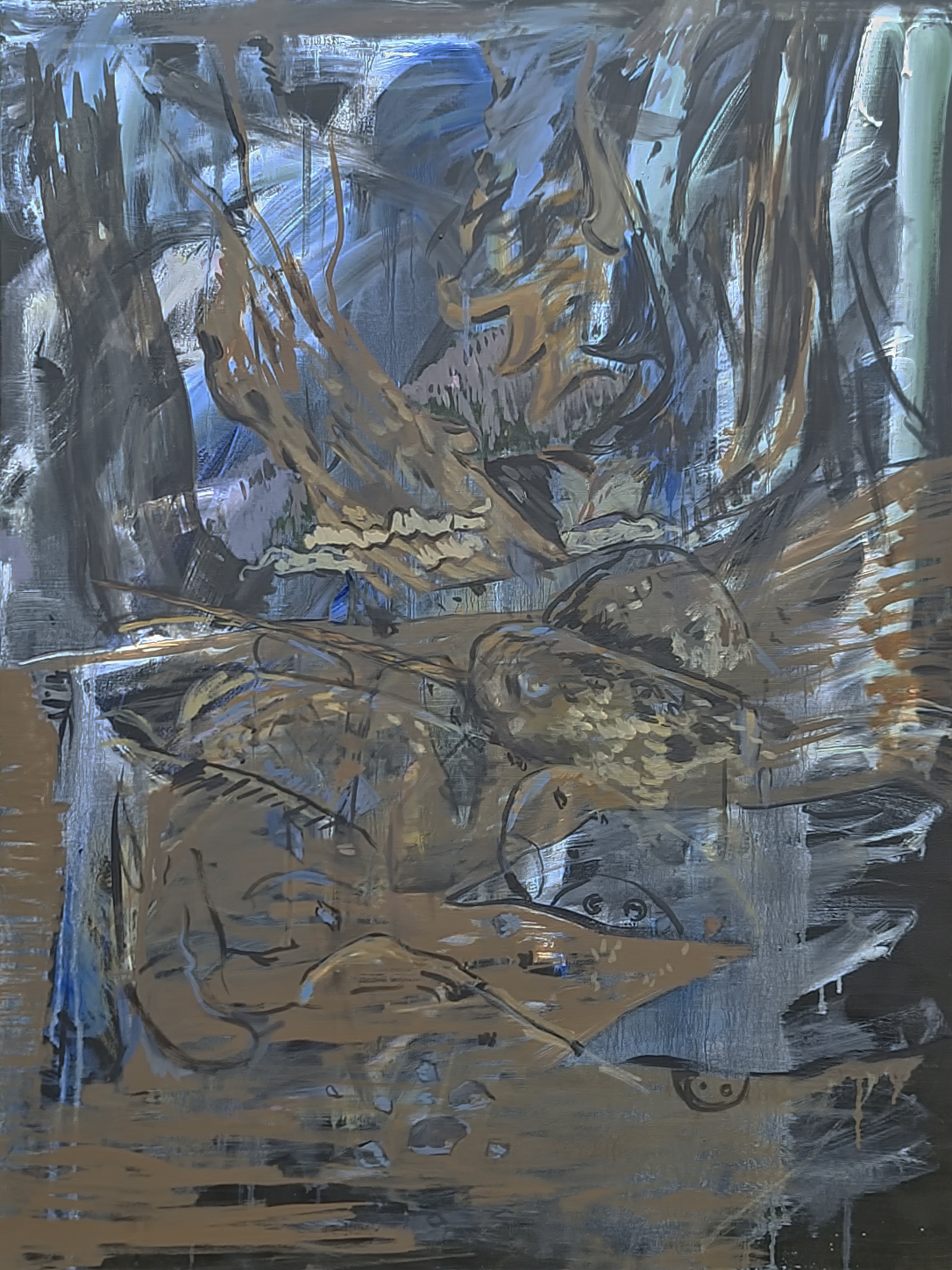The paintings of Talar Aghbashian are made with black, white, ochre and sky blue. At least such is the limited chromatic spectrum of her most arresting paintings. Other canvases include traces of red and green. Regardless, the optical proposition is established: Color without light and configurational complexity without space. Meandering through Marfa’ Gallery’s latest exhibition of Talar Aghbashian titled Solace of the Afterimage, one is met with pictorial spaces built with painterly vigor, complex linearity, and a dense weaving of truncated shapes. The paintings inevitably evoke foliage, built environment, near-familiar objects, a limb, traces of fingers and at times an expanse, a view quickly folded back into the thicket of painterly notations. It is a world seen from a close distance. If not quite beheld, then at least convincingly intimated in its unavoidable strangeness. A world of things, and of relations in between, well known and yet eludes clear classification. One might venture and say that it is a world of things not in their place and as such a world that endangers the purity of things in place and of name tags correctly ascribed. What generates this ‘mess’ is the absence of light and the presence of color. A blue for a trunk, of a tree perhaps, an overhanging curtain of wavy raw umber, for a sky perhaps, a stretch of olive grey, for a shoulder I guess; colors chosen by memory, recalled through the dark and away from daylight and its play of shadows. But what is also remarkable about these canvases is their utter lack of any grand narrative, no myths or mythology, no heroes and certainly no landscapes to witness the play of fates. Aghbashian’s canvases are full and at times overstuffed with the forgettable quotidian activities of things, animate and inanimate, in places where there is little room, too many things and not enough shelving-space.

An unlikely comparison imposes itself with the some of the paintings of Markus Lüpertz (b. 1941) which employ a similar emphasis on black, white, ochre and sky blue but where a stage is set for objects and figures to playout, in very irresolute gestures, the remains of past myths. His White Horse (c. 1989-90) is such an example that can clarify the choices made by Aghbashian. In Lüpertz’s we see a stage, concocted and derelict, where figures still appear in their roundness, miming gestures that are supposed to mean something to an audience that is left guessing. It is a stage on which appears what might be called a contaminated mythology or a longing for a collective understating of history that is nevertheless excessively and necessarily wrought by the idiosyncratic individuality of the painter. Ahgbashian is equally engaged with the event of the day but dissimilarly concerned with the echoes of history. Her colors are not the dried up chroma of post-history. Rather, her blues, ochres, umbers, black and white are the collected local colors of things recalled in their denotative presence in a world that is neither indebted to a history nor set to move towards any clear future destination. It is a world of ‘hereness’ and as such it is without the shadows of light moving above and across.

Exhibition Details
Talar Aghbashian - Solace of the Afterimage
13 December 2023 – 24 March 2024, Marfa’ Projects, Beirut, Lebanon